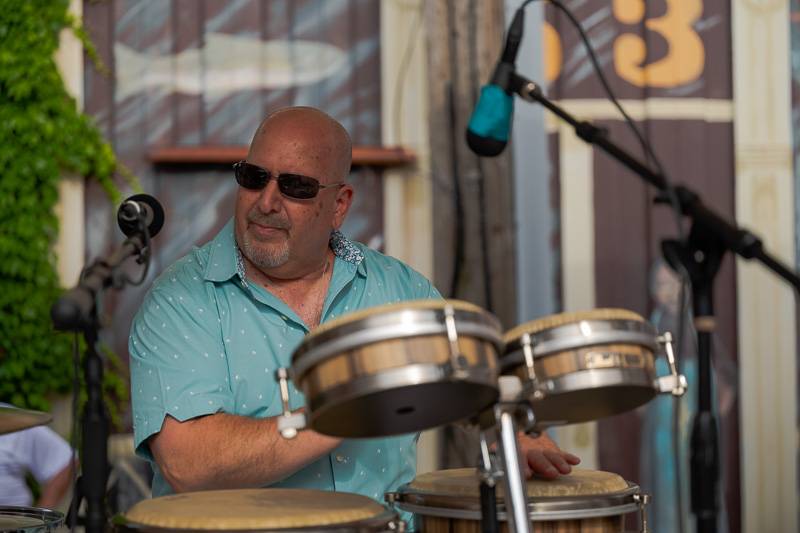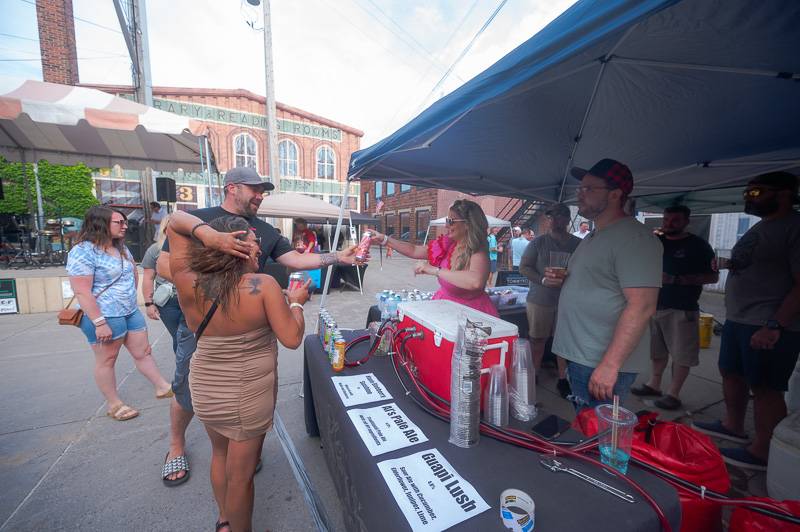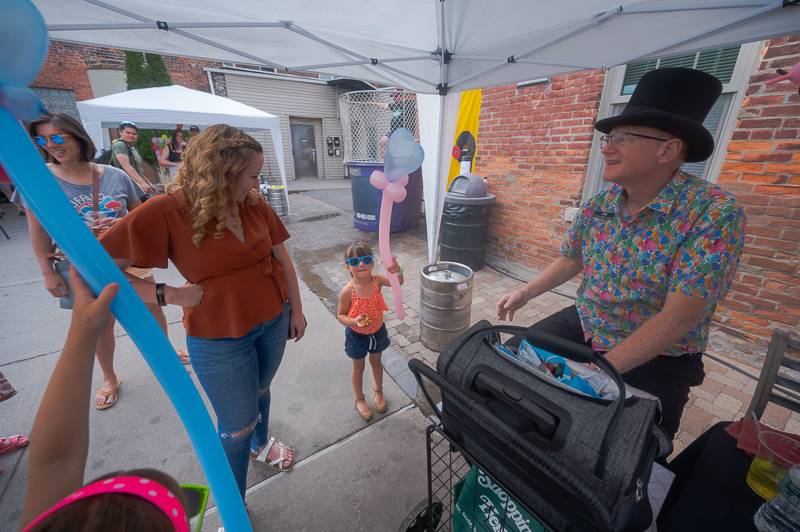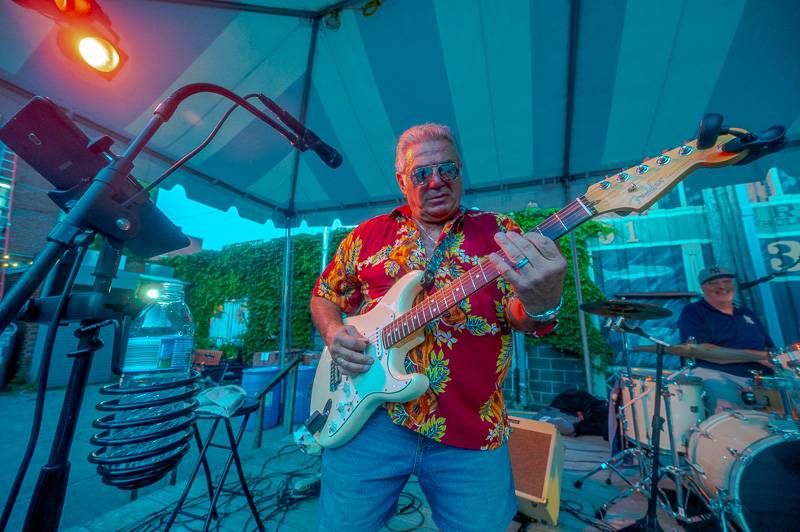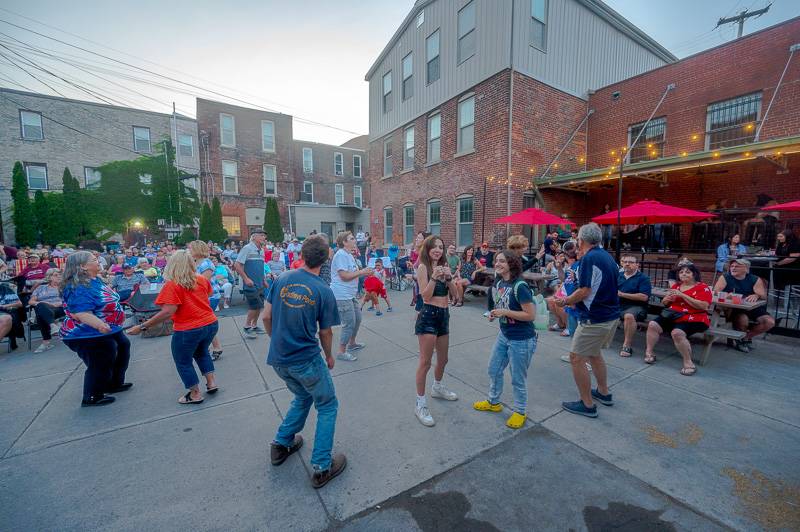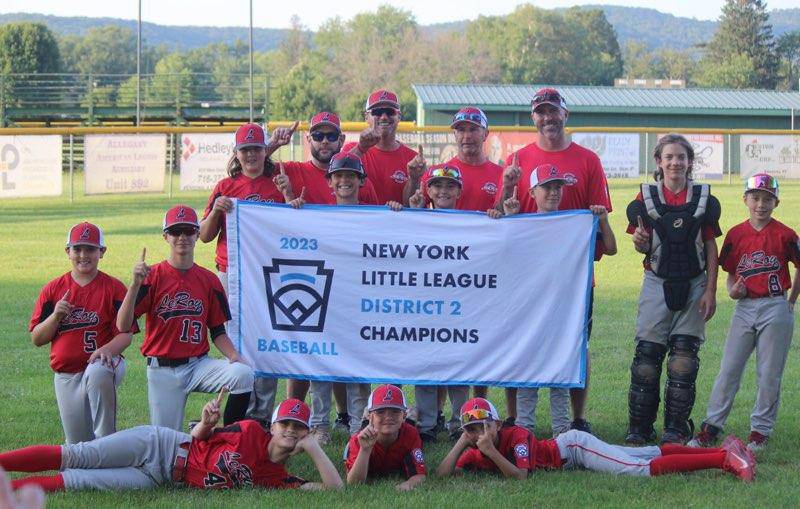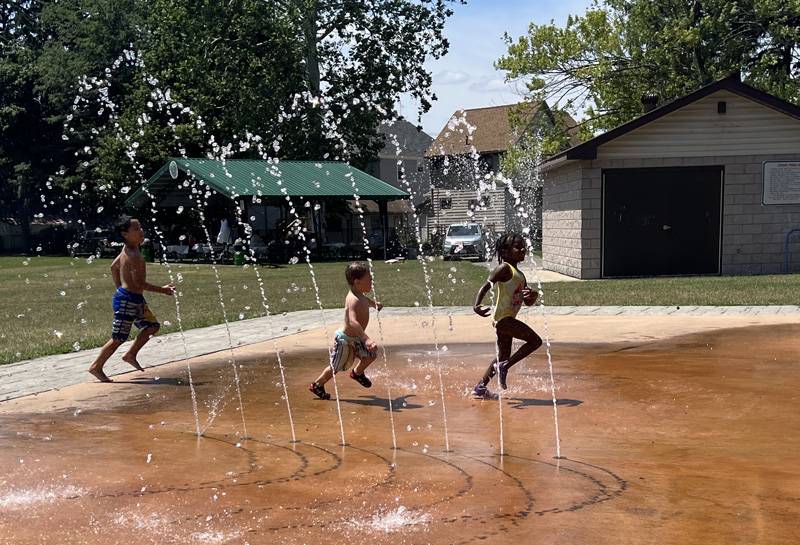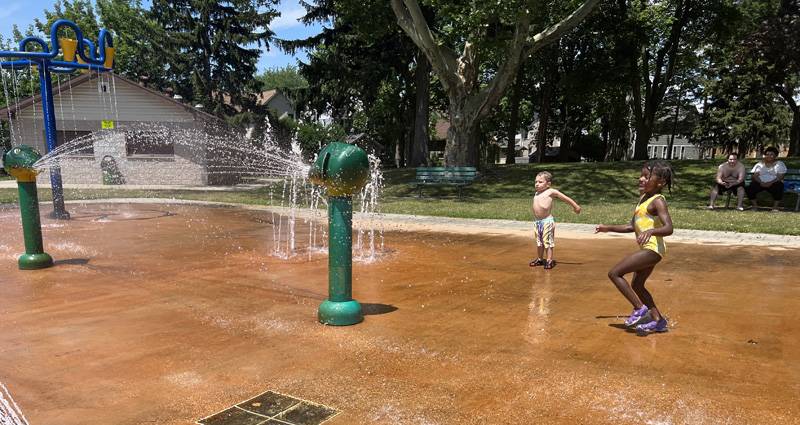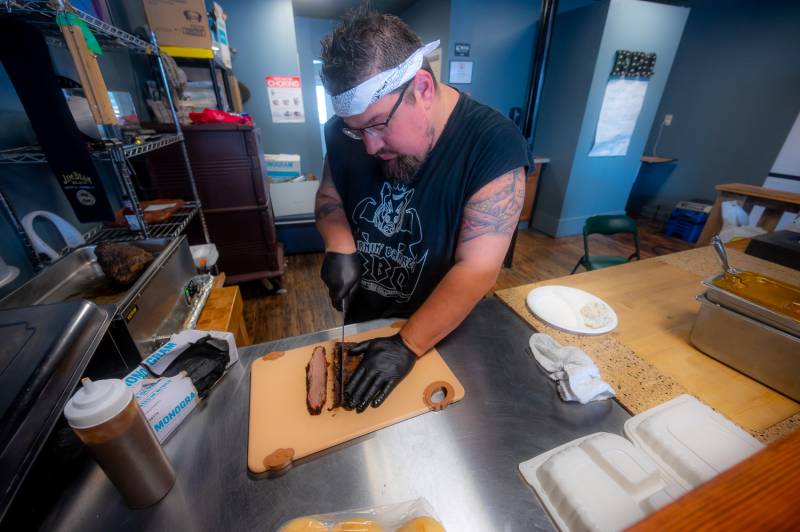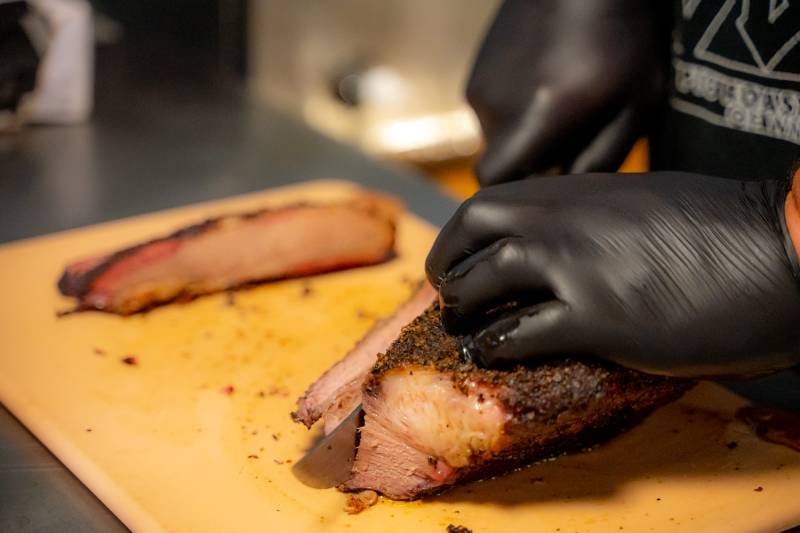Jacob William Patterson, 27, of Killian Road, Pembroke, is charged with destroying physical evidence, criminal possession of a controlled substance 7th, resisting arrest, and obstructing governmental administration. Deputy Jeremiah Gechell and Deputy Alexander Hadsall conducted a traffic stop on Dellinger Avenue, Batavia, at 1:41 a.m. on June 21. During the traffic stop, deputies identified Patterson as a backseat passenger. The deputies were aware of warrants for the arrest of Patterson. While attempting to take Patterson into custody, Patterson allegedly resisted arrest and fought with the deputies. Once he was taken into custody, a further investigation with the assistance of Deputy James Stack and K-9 Razor, a controlled substance was allegedly recovered from the vehicle. Patterson had allegedly tried to destroy the controlled substance just prior to his arrest. Patterson was held pending arraignment.
Jacob W. Patterson, 27, of Killian Road, Pembroke, was arrested on a warrant out of City Court. The warrant stems from an incident on April 24 where Patterson was charged with driving while ability impaired by drugs, obstructing governmental administration 2nd and four counts of criminal possession of a controlled substance 7th. During that incident, Patterson allegedly ran from and fought with officers as they attempted to take him into custody. He was issued an appearance ticket. On May 10, a warrant was issued after Patterson failed to appear in court. Patterson was located on a traffic stop and arrested on the warrant on June 21. He was arraigned in City Court and remanded to the Genesee County Jail. The arrest was handled by Officer Richard Messmer.
Gerald Lawrence Smith, 37, of Walnut Street, Batavia, is charged with criminal possession of a controlled substance (degree not specified), moving from lane unsafely, speed not reasonable and prudent, and criminal use of drug paraphernalia. Smith was reportedly involved in a motor vehicle accident at 10:18 p.m. on June 25 on Byron Road, Stafford. According to an investigation by Deputy Kenneth Quackenbush and Deputy Nicholas Charmoun, Smith's vehicle went off the roadway and into a wooded area. Following the accident, Smith was allegedly found in possession of cocaine, scales, and baggies for packaging. Smith was processed at the Genesee County Jail and released on an appearance ticket.
Nekia Drio Newton, 47, of Rochester, is charged with criminal possession of a controlled substance 3rd, signal less than 100 feet, and aggravated unlicensed operation of a motor vehicle 3rd. Newton was stopped by Deputy Jeremiah Gechell at 11:49 p.m. on June 28 on West Main Street in the City of Batavia. During the stop, Newton allegedly admitted to possession of a controlled substance. Newton was processed at the Genesee County Jail and released on an appearance ticket.
Nicholas C. Kingdollar, 27, of Batavia, was arrested on a warrant stemming from charges of criminal mischief 4th and harassment 2nd. Kingdollar is accused of being involved in a disturbance on April 15 at an undisclosed location in Batavia, where he allegedly damaged property and pushed another person. Officers were unable to locate him, and a warrant was issued. On June 22, Kingdollar was located and arrested. He was arraigned in City Court and released on his own recognizance pending his next court appearance.
Jaqulyn A. Dueppengiesser, 39, of Perry, was arrested on June 22 on a pair of warrants out of City Court. The first warrant stems from an investigation on April 20 where Dueppengiesser was initially arrested for petit larceny, after allegedly stealing merchandise from a local business. She was issued an appearance ticket and was to appear in Batavia City Court at a later date. Dueppengiesser allegedly failed to appear, and an arrest warrant was issued. She was arrested on the warrant on May 24 and arraigned in City Court, where she was released on her own recognizance. She allegedly failed to appear again, and a bench warrant was issued on June 15. On June 22, Dueppengiesser was arrested on that warrant and arraigned in City Court. The second warrant initially stems from a traffic stop on Feb. 19, where Dueppengiesser was allegedly found to be in possession of a narcotic. She was charged with criminal possession of a controlled substance 5th. She was arraigned and released under the supervision of Genesee Justice. On May 1, a bench warrant was issued after Dueppengiesser allegedly failed to comply with a court-ordered program. She was arrested on that warrant on May 24 and released on her own recognizance. Another bench warrant was issued on June 15 after she allegedly failed to appear in court. She was arrested on that warrant on June 22. Dueppengiesser was arraigned in City Court and remanded to the Genesee County Jail. The arrests were handled by Officer Andrew Mruczek.
Andrew D. Beedham, 37, of Batavia, is charged with harassment 2nd. The arrest is the result of an investigation into a disturbance where Beedham allegedly hit another person. During his arrest, Beedham was allegedly found to be in possession of a narcotic. He was charged with an additional count of criminal possession of a controlled substance 7th. Beedham was arraigned in City Court and released on his own recognizance.
Jennifer J. Hogan, 32, of Rochester, is charged with two counts of bail jumping 3rd and one count of bail jumping 2nd. Hogan was arrested on June 27. She was already in custody at the Genesee County Jail after a previous arrest on June 15 on three bench warrants. The bail-jumping charges stem from those three cases. She was arraigned in City Court and remanded to jail.
Breanna E. Brummond, 32, was arrested on two bench warrants. Brummond was arrested on June 27 on warrants out of City Court. The warrants stem from two separate incidents on Feb. 3 where Brummond was charged with petit larceny and criminal trespass 3rd. Brummond was issued appearance tickets in both cases and released. She allegedly failed to appear, and two warrants were issued on Feb. 14. Brummond was arrested on both warrants on April 5. She was arraigned and released. April 20, warrants were issued again after she allegedly failed to appear. Brummond was arrested on those warrants on June 27 and arraigned. She was remanded to the custody of the Genesee County Jail and is due back in court at a later date. The arrest was handled by Officer Kevin Defelice. Brummond was also arrested by the Sheriff's Office and charged with bail jumping 2nd. She is accused of failure to appear in City Court.
Shameek T. Taylor, 36, of Bergen, is charged with criminal obstruction of Breathing. Taylor was arrested on June 27, after an investigation into a disturbance on West Main Street. Taylor allegedly placed his hand around the neck of another person and applied pressure, causing their breathing to be obstructed. Taylor was arraigned in City Court and released on his own recognizance. He is scheduled to appear back in court at a later date.
Bill A. Thomas, 63, of Batavia, is charged with open container. Thomas was allegedly found to be in possession of an open alcoholic beverage container on June 21 in a local park. He was issued an appearance ticket and released.
Billy Joe Budziszewski, 31, of Varysburg, was taken into custody on an arrest warrant issued in City Court. The warrant is the result of an incident on Jan. 1 where Budziszewski allegedly refused to leave a local business. He was charged with trespassing and allegedly fought with officers when they attempted to take him into custody. He was issued an appearance ticket and released. Budziszewski allegedly failed to appear, and a warrant was issued on Jan. 24. He was arrested on the warrant on June 24.
Dustin T. Forkell, 32, of Ogden, was arrested on two bench warrants. Forkell was taken into custody on June 24. The warrants stem from an incident that led to a charge of criminal possession of stolen property 4th after he was allegedly found in possession of a stolen vehicle. He was additionally charged with false impersonation and petit larceny after he allegedly stole merchandise from a local business and lied to officers about his identity. Forkell was arraigned and ordered to return to court at a later date.
Brittanee J. Hooten, 34, of Batavia, was taken into custody on an arrest warrant issued by City Court. Hooten was arrested on June 22. Hooten was originally charged with petit larceny on Sept. 17 after allegedly stealing merchandise from a local business. Hooten was released on an appearance ticket. A warrant was issued on Oct. 20 after Hooten allegedly failed to appear in court. Following her June 22 arrest, Hooten was arraigned and remanded to the Genesee County Jail on $100 cash bail and $200 surety bond.
Kenyetta D. Culver, 47, of Batavia, was taken into custody on an arrest warrant on June 23. Culver turned herself into Batavia PD on a warrant issued by City Court. The warrant is the result of a traffic stop on Feb. 12 where Culver was issued a misdemeanor traffic ticket for operating a vehicle with a suspended registration. The warrant was issued on June 14 after Culver allegedly failed to appear in court. She was arraigned in City Court, where she pled guilty and was assessed a fine.
William Avant Lewis, 37, of Riley Street, Buffalo, is charged with bail jumping (degree not specified). Lewis is accused of failure to appear in Batavia Town Court. He was held pending arraignment.
Dontaya Nell Kyles, 31, of Jessamine Street, Macon, Ga., is charged with bail jumping 2nd. Kyles is accused of failure to appear in Town of Batavia Court on a grand larceny 3rd charge and then failing to appear on her reappearance date. She was arrested and ordered held on $10,000 bail.
Amber Lynne Westenberger, 32, of Loomis Road, Farmington, is charged with bail jumping 2nd. Westenberger was held pending arraignment.
Cain Alexander Catino, 51, of South Swan Street, Batavia, is charged with grand larceny 4th. Cantino is accused of stealing a wallet while at Batavia Downs on June 25 at 10:30 p.m. He was processed at the Genesee County Jail and released on an appearance ticket.
Lester Shakayla Ebony Deas, 25, of Affinity Lane, Rochester, is charged with petit larceny. Deas is accused of stealing from an undisclosed location (the Sheriff's Office withheld the information) on Veterans Memorial Drive in the Town of Batavia at 6:27 p.m. on June 27. Deas was issued an appearance ticket. UPDATE: The Batavian submitted a FOIL request for the name of the store. It is Old Navy.
Pablo Viera, 44, no known address, is charged with criminal mischief 4th and criminal possession of a weapon 4th. Viera is accused of using a wooden tire knocker to strike the side of a Kenworth semi-truck multiple times, causing dents in the side door at 7:35 p.m. on June 25. Viera was released on an appearance ticket.
Joseph Gerard Eyer, 75, of Cowen Road, Piffard, is charged with grand larceny 4th. Eyer is accused of stealing a purse that contained a mobile phone and multiple credit cards at 5:15 p.m. on June 23 while at Target. He was issued an appearance ticket.
Mark Louis Frongetta, 53, of Park Road, Batavia, is charged with criminal possession of a weapon 3rd and menacing 2nd. Frongetta is accused of threatening another person with a weapon making the person fear for his life at a location on Park Road at 8:44 p.m., July 1. Frongetta was held pending arraignment.
Francis Jermey Fuest, 44, of South Main Street, Batavia, is charged with DWI, driving with a BAC of .18 or greater, and speeding. Fuest was stopped at 12:14 a.m. on May 25 on Clinton Street Road, Batavia, by Deputy Mason Schultz. Fuest was arraigned on the charges on July 1 and released on an appearance ticket.
Maurice Richard McCoy, 70, of North Street, Batavia, is charged with DWI and driving with a BAC of .08 or greater. McCoy was stopped by Deputy Zachary Hoy in the parking lot of Walmart at 8:38 p.m. on July 2. He was released on an appearance ticket.
Andrew Scott Hartman, 40, of Route 78, Java Center, is charged with DWI, driving with a BAC of .08 greater, and inadequate headlamps. Hartman was stopped at 12:13 a.m. on July 2 on Clinton Street Road, Stafford, by Deputy Ryan Mullen. He was released on an appearance ticket.
Austin F. Buzard, 25, no known address, is charged with assault 2nd and aggravated criminal contempt. Buzard was arrested by State Police in connection with an incident reported at 8:30 p.m. on July 3 in the Town of Stafford. He was held in custody. No further details released.
Andrew R. Bastiano, 36, of Batavia, is charged with felony DWI. Bastiano was stopped at 12:39 a.m. on July 3 in the Town of Elba by State police. He was released on an appearance ticket.
Paula A. Kingdollar, 54, of Pavilion, is charged with petit larceny. Kingdollar is accused of stealing in the Town of Batavia at 1:33 p.m. on June 2. She was arrested by State Police and released on an appearance ticket. No further details released.
A 17-year-old was arrested by State Police and charged with petit larceny in connection with a theft reported at 5:17 p.m. on July 2 in the Town of Darien. The youth was released on an appearance ticket.
Rudy Lebron Cartagena, 33, of Niagara Falls, is charged with felony DWI. Cartagena was stopped at 5:25 a.m. on June 30 in the Town of Alabama by State Police. He was released on an appearance ticket.









